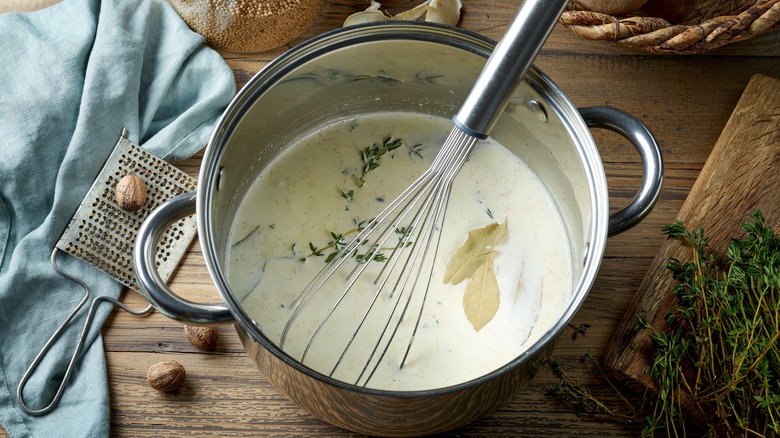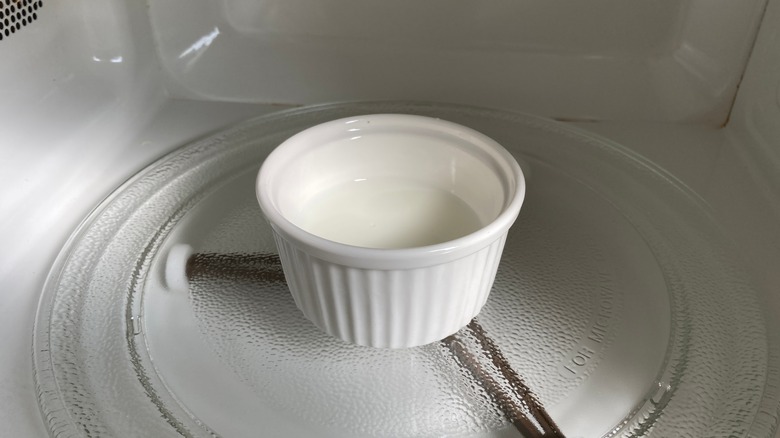It's Tempting To Skip Scalding The Milk For Recipes But Here's Why You Shouldn't
Scalded milk is an ingredient that often appears in older recipe books. Because of its association with times past, many cooks today may skip the scald, thinking that it's a holdover from the days before pasteurized milk. Scalding milk, however, is about much more than killing bacteria.
When it comes to baking, scalding milk helps the rising process in bread and pastries by breaking down whey proteins. The proteins in milk weaken gluten in dough, which can interfere with proper rising, but scalding denatures these pesky proteins. This is just one of the reasons why a recipe may call for scalding milk, though.
The scalding process also helps cut the time it takes to properly set a custard or pudding. The scalding process heats the milk, getting it ready to work as soon as the other ingredients are dropped in. Just be sure to cool the mixture slightly before adding eggs or egg yolks, as the scalded milk risks cooking the eggs. You can also temper the eggs by whisking a small amount of the hot milk into them.
Another good reason to scald milk is to help infuse flavor into a recipe. Milk is a great flavor distributor, and this trait is only enhanced when it is heated. Simply drop vanilla pods, lavender flowers, cloves, cinnamon sticks, citrus zest, or other flavor elements into the milk during the scalding process (and remember to strain them out before using the milk).
Modern cooks can now bypass the pot and stove
So, scalding milk is clearly about more than just bacteria, and shouldn't be skipped. But that doesn't mean that you need to stand at the stove and do it the old fashioned way. If you're the sort of cook that doesn't have a lot of time to spend in the kitchen, you can also scald milk in the microwave. (For the time-pressed home cook, the microwave is also a great way to bake fresh cookies.)
To scald milk in the microwave, get yourself a microwave-safe bowl (only use cookware that specifically says it's microwave-safe), a microwave-safe spoon, a food thermometer (meat thermometers and candy thermometers will both work), and your milk. Heat the milk in 20-second increments, leaving the spoon in the bowl to collect the bubbles and prevent the milk from popping while heating. Every time the microwave stops, give the milk a stir and check the temperature. Continue doing this until the milk reaches 180 degrees Fahrenheit. With this simplified version of milk scalding, there is no excuse for skipping the step.

